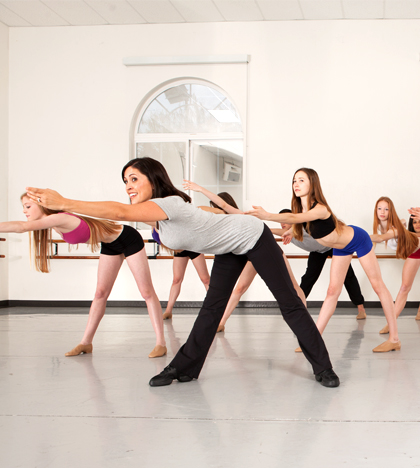Faith: The Key to Applying Corrections
 By Angela D’Valda Sirico of Dance Teacher Web
By Angela D’Valda Sirico of Dance Teacher Web
Believe in your corrections, believe in your teacher, and now repeat it again and again.
This should be a chant that all students over the age of eight say as they go into class.
Don’t you love it when a student you teach comes to tell you about some revelation they have just experienced in another class they have just taken? It was a correction that you have said only five thousand times. Finally they get it and hear it. Don’t lose faith in yourself. You know what you are doing and that you are a good teacher.
It really is all about the faith. No, I am not going to get religious on you now. It’s about showing the students to have trust in you as a teacher and an understanding that you are there to guide them to a higher level. If they are there just for recreation it is important to point out to them that part of recreation is to have fun.
In dance the real fun begins when you start to have a knowledge or vocabulary of steps. To master these steps, corrections will be given, and if applied will lead to greater joy and self-expression. I like to give the analogy that if you have a piano and you sit down at it and play “chop sticks,” how long will it take before you get bored with playing that? You need to learn and get better and broaden your knowledge.
The key is to get the students to have faith in what we are saying, and know that if they can understand the correction they will get better.
So how do we do it? How can we get the students to have faith in what we say and love to hear any bit of information we impart to them? How do we go beyond a correction other than to verbalize, demonstrate and then have them do? Go that extra mile to show them that you care. I know in some ways that may sound a bit corny, but we have found that it works like a charm every time. Students don’t care about how much you know until they know how much you care, especially about them! Eye to eye contact and a smile will go a long way.
Sometimes the most challenging students only want to know that someone really does care about them, even if they have a funny way of showing it. They are the ones that will really pull our focus and energy. The key is not to let them have it all. Sometimes just having a student have a time out in class will do the trick. If a student has decided that they want to be a problem for the day, I will have them in the middle of the class go and sit down and watch for some or all of the class. This sends a pretty strong message and usually is very effective.
No matter what happens I always try to let the student know in some way that I have their best interest in mind. I will not, however, let them get away with behavior that is detrimental to the rest of the class. I will constantly tell my class that they are there to learn, recreational or not! I am there to teach, coach and give constructive criticism.
I know some parents just want their child to have fun and don’t care about anything else. We need to educate these parents to understand that we are teaching more than dance. If a student can learn how to believe in a correction that can be used to help them solve a problem, how many times in their lives will that be used? Promoting coping skills – hallelujah!



